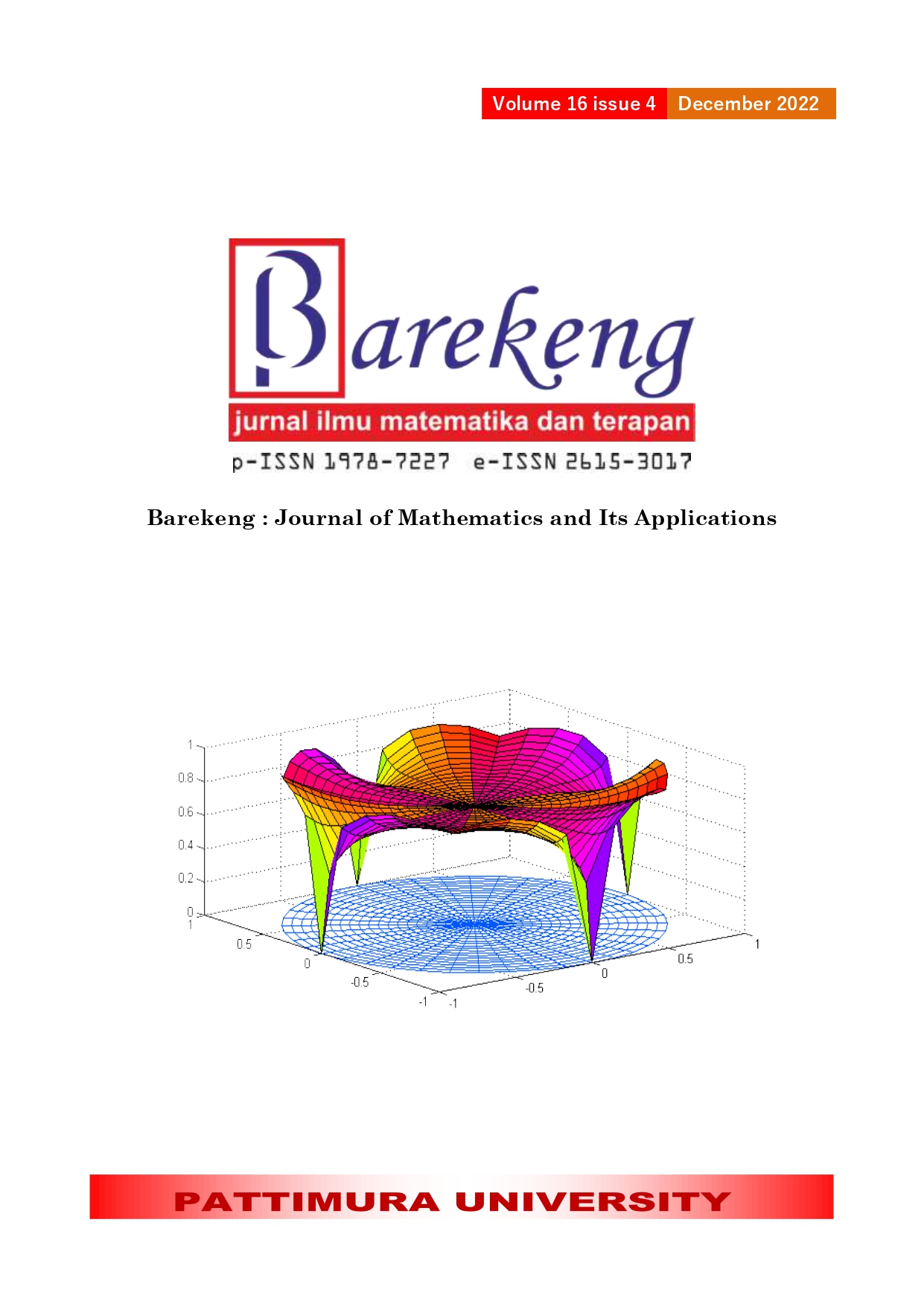MAPPING THE HAPPINESS LEVEL DISPARITY OF THE INDONESIAN POPULATION USING MULTIDIMENSIONAL SCALING
Abstract
The Central Statistics Agency has published a survey report on the happiness of the Indonesian people in 2017. The survey results show that there are disparities that vary between provinces. The province with the highest happiness index was North Maluku, while the province with the lowest happiness index was Papua. Based on this phenomenon, the researcher wants to map the provinces based on the similarity of happiness levels. Researchers used quantitative descriptive methods with data analysis using multidimensional scaling. The results show that the provinces that have similarities with the happiest group are: [1] North Maluku province is like Riau Islands, Gorontalo, North Sulawesi, and Maluku. [2] South Kalimantan is like North Kalimantan, East Kalimantan, DI Yogyakarta, and Bali. [3] DKI Jakarta is like West Papua. [4] South Sulawesi is like West Sumatra, Riau, and South Sumatra. [5] Aceh is like Kep. Bangka Belitung. The less happy group [1] West Java is like Banten, Central Java, Central Kalimantan, Jambi, and East Java. [2] North Sumatra is like Papua. [3] Central Sulawesi is like Southeast Sulawesi, West Nusa Tenggara, Bengkulu, West Kalimantan, West Sulawesi, Lampung, and East Nusa Tenggara.
Downloads
References
A. Galvão, S. Jesus, M. Pinheiro, and J. Viseu, “The dimensions of happiness within the Oxford happiness questionnaire: developing a valid multidimensional measurement instrument for a portuguese sample,” Rev. INFAD Psicol. Int. J. Dev. Educ. Psychol., vol. 2, pp. 465–478, Jun. 2020, doi: 10.17060/ijodaep.2020.n1.v2.1871.
World Population Review, “Happiness by country 2021,” 2021. https://worldpopulationreview.com/country-rankings/happiness-by-country (accessed Nov. 19, 2021).
BPS, Statistik Indonesia 2021 Statistical Yearbook of Indonesia 2021. Jakarta: Badan Pusat Statistik/BPS-Statistics Indonesia, 2021. Accessed: Nov. 19, 2021. [Online]. Available: https://www.bps.go.id/
A. N. Rowan, “World Happiness 2022,” WellBeing News, vol. 3, no. 3, p. 3, 2021.
K. Isa et al., “Determining Indicators Of Happiness Index Among University Staff,” Oct. 2019, doi: 10.35940/ijeat.E1103.0585C19.
S. Nemati and F. M. Maralani, “The Relationship between Life Satisfaction and Happiness: The Mediating Role of Resiliency,” Int. J. Psychol. Stud., vol. 8, no. 3, p. 194, Aug. 2016, doi: 10.5539/ijps.v8n3p194.
C. Ding, Fundamentals of applied multidimensional scaling for educational and psychological research. 2018. Accessed: Nov. 19, 2021. [Online]. Available: https://www.google.com/books?hl=en&lr=&id=YvFUDwAAQBAJ&oi=fnd&pg=PR5&dq=Fundamentals+of+Applied+Multidimensional+Scaling+for+Educational+and+Psychological+Research&ots=kDmJ3RocO6&sig=ixK0eUqciyCzTcAbICQwf6pNl6M
P. Mair, “Multidimensional Scaling,” 2018, pp. 257–287. doi: 10.1007/978-3-319-93177-7_9.
J. F. Hair Jr., W. C. Black, B. J. Babin Rolaph, and E. Anderson, Multivariate data analysis. United States of America: Pearson Educational Limited, 2014. Accessed: Sep. 19, 2021. [Online]. Available: https://digitalcommons.kennesaw.edu/facpubs/2925/
J. Graffelman, “Goodness-of-fit filtering in classical metric multidimensional scaling with large datasets,” J. Appl. Stat., vol. 47, no. 11, pp. 2011–2024, 2020.
J. Graffelman, “Multidimensional Scaling,” 2019.
A. Suerdem, “Multidimensional Scaling of Qualitative Data,” in The Routledge Reviewer’s Guide to Mixed Methods Analysis, Routledge, 2021, pp. 45–56.
N. Saeed, H. Nam, M. I. U. Haq, and D. B. Muhammad Saqib, “A Survey on Multidimensional Scaling,” ACM Comput. Surv., vol. 51, no. 3, pp. 1–25, Jul. 2018, doi: 10.1145/3178155.
C. A. Musluoglu, “Beyond Euclidean Distance Matrices,” 2019.
X. Tang, S. Zhang, Z. Wang, J. Liu, and Z. Ying, “Procdata: An R package for process data analysis,” Psychometrika, vol. 86, no. 4, pp. 1058–1083, 2021.
J. Wang, “Classical Multidimensional Scaling,” in Geometric Structure of High-Dimensional Data and Dimensionality Reduction, Berlin, Heidelberg: Springer Berlin Heidelberg, 2012, pp. 115–129. doi: 10.1007/978-3-642-27497-8_6.
W. G. Jacoby and D. J. Ciuk, “Multidimensional scaling: An introduction,” Wiley Handb. Psychom. Test. A Multidiscip. Ref. Surv. Scale Test Dev., pp. 375–412, 2018.
A. Little, Y. Xie, and Q. Sun, “An analysis of classical multidimensional scaling,” arXiv Prepr. arXiv1812.11954, 2018.
Copyright (c) 2022 Sumin Sumin, Heri Retnawati

This work is licensed under a Creative Commons Attribution-ShareAlike 4.0 International License.
Authors who publish with this Journal agree to the following terms:
- Author retain copyright and grant the journal right of first publication with the work simultaneously licensed under a creative commons attribution license that allow others to share the work within an acknowledgement of the work’s authorship and initial publication of this journal.
- Authors are able to enter into separate, additional contractual arrangement for the non-exclusive distribution of the journal’s published version of the work (e.g. acknowledgement of its initial publication in this journal).
- Authors are permitted and encouraged to post their work online (e.g. in institutional repositories or on their websites) prior to and during the submission process, as it can lead to productive exchanges, as well as earlier and greater citation of published works.






1.gif)



